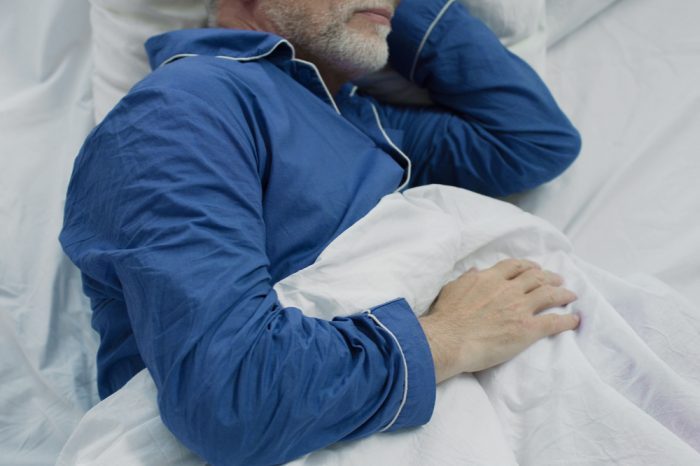Recent study finds CBD removes plaque from arteries of rodents.
You can add a new medical condition to the roster of ailments treated by cannabis. Recent research suggests that cannabis may prevent strokes because it can help remove plaque from arteries.
Every year about 800,000 people suffer from strokes across the world. That’s an average of one stroke every 40 seconds. Strokes are the fifth leading cause of death in the United States, and the No. 1 source of adult disability. In short, they are deadly serious.
Stokes can happen to anyone—not just the elderly. These are the result of blockage of blood flow to the brain, causing cells to die. When brain cells die, the bodily and mental functions they control cease as well. This can lead to life time disability.
Thanks to the National Academy of Medicine, which has determined that the study of cannabis is and should be a priority, scientists have discovered that one important way to fight the stroke statistics is with cannabis. The latest research indicates two ways in which CBD (cannabidiol), a cannabinoid found in high quantities in the cannabis plant, can help.

1. Cannabis May Reduce Risk of Obesity
Strokes can be triggered by clogged arteries. Basically, these are the vessels that shuttle oxygen-rich blood from the heart to the body and brain. The best way to treat clogged arteries is to prevent them from getting gummed up in the first place. That means a healthy diet, no smoking, and regular exercise. These are the kind of better living practices that many people either lack the resources to access or the will to practice.
CBD helps the body to regulate hunger. In studies, rats that tended to overeat showed a remarkable decrease in appetite after being treated with CBD. Rats that stopped eating when satiated had no change in consumption from CBD treatment. Translated to humans, this could mean that overeaters may be able to curb their desire for food simply by taking CBD. If the results can be replicated in humans, people would eat 28 percent fewer calories at every meal. That’s an enormous drop off!
The second way that cannabis can help prevent stroke is to remove plaque buildup in the arteries. It does this by preventing naturally occurring endocannabinoids from degrading. The presence of CBD frees up the body’s own workers to focus their time on cleaning out the blood vessels to ensure that blood can flow easily and unobstructed throughout the body. Effectively, CBD helps to remove plaque from arteries.
2. CBD May be able Remove Plaque From Arteries
Basically, the question remaining is if any of these hypotheses will actually function in humans.
It’s important to note that there are two kinds of strokes: hemorrhagic and ischemic. The latter, ischemic strokes are more common, accounting for about 85 percent of all occurrences (note: this percentage includes patients who survive and those who do not). These are the type of stroke that CBD has the most potential to prevent. This is the kind blood blockages cause. A hemorrhagic stroke occurs via a brain aneurysm or a leak from a frail blood vessel, causing blood to spills into, or around, the brain. Forty percent of stroke deaths are due to hemorrhagic stroke, a very devastating brain injury. CBD may also help in this regard as it reduces blood pressure.

Strokes can be grim, but CBD therapy provides a real reason to be hopeful. The rationale is sound and the lab experiments are promising. Something else CBD excels with is neurogenesis. This means that CBD could become a key component of stroke recovery.
Finally, next steps are to to test out cannabis-based stroke-prevention therapy in a clinical setting.
Ingestion Methods for Patients
CBD rich strains could fight the anxiety and depression that tend to befall stroke patients. Strains with THC may be necessary as well, for stronger pain treatment. In some cases, absorption methods like THC patches could also benefit a stroke patient.
Edibles could provide perhaps the longest pain relief, but quick absorption methods like vaping or smoking can provide relief quickly. Further, if the patient is worried about smoking, know that vaping dry bud is free from the concerns of the EVALI crisis of late 2019; vaping dry bud also removes any concerns about combustion via smoking.






Nancy Adams
I’m needing some direction on this. Please help!
Jennifer Grant
What sort of help are you looking for, Nancy? 🙂
Heather Watson
Thanks for the information. Is there a reference/journal article referenced?
Jennifer Grant
Yes, within each article we have placed “embedded citations.” Look for the green text.
Clay McDonnell
Where’s the embedded citation of plaque removal demonstrated in animals? It is stated authoritatively here but where is the embedded link?
Jennifer Grant
Hi Clay – you can find the link in the first paragraph, second sentence. Also here: https://www.liebertpub.com/doi/full/10.1089/can.2017.0033
Matthew Johnson jr
which type of oil helps with plaque removal.
Jennifer Grant
These studies are working with CBD extract or CBD-rich oil.
arthur berrow
cbd oil will it clean clogged arterys
arthur berrow
which oil will reduce plaque in my arterys
Maria Keown
last year I’ve had over 12 stents placed into each of my leg arteries on both sides between knee and hip, vain attempt from trying to keep them open, nothing to be done for the lower leg portion, arteries are to small and the blood flow is already dimmishing again. Not (yet) stroke related, but vascular nevertheless…. will volunteers be sought for clinical trials? Thank you
Michael Wright
It says cbd helps with obesiy. In the day, a few drags from a joint sent me to the cupboard looking for snacks. Just saying.
MaryAnn Routh
I hear you ….lòl